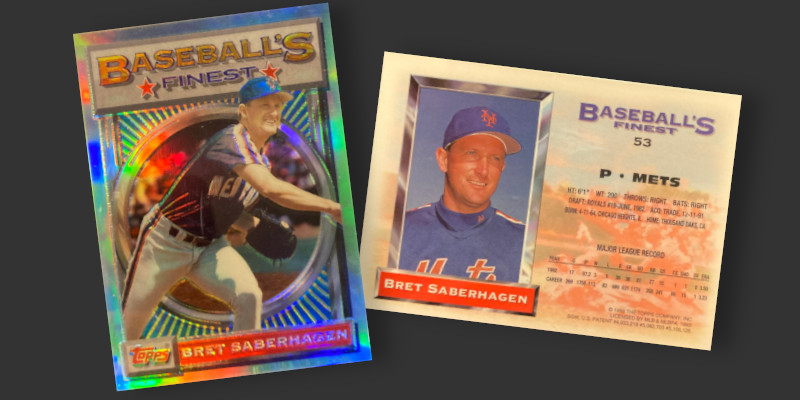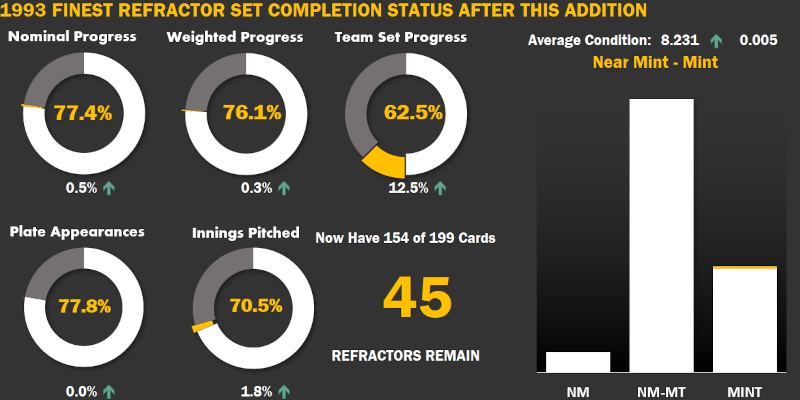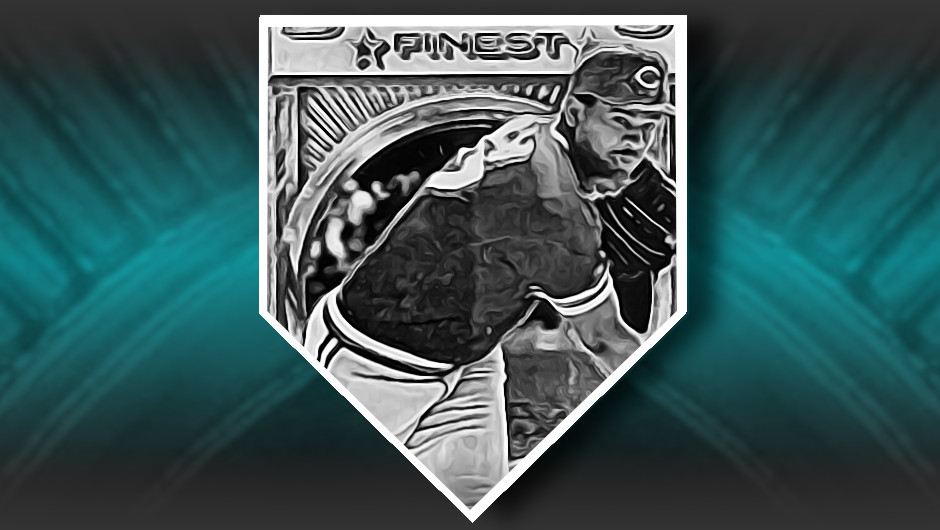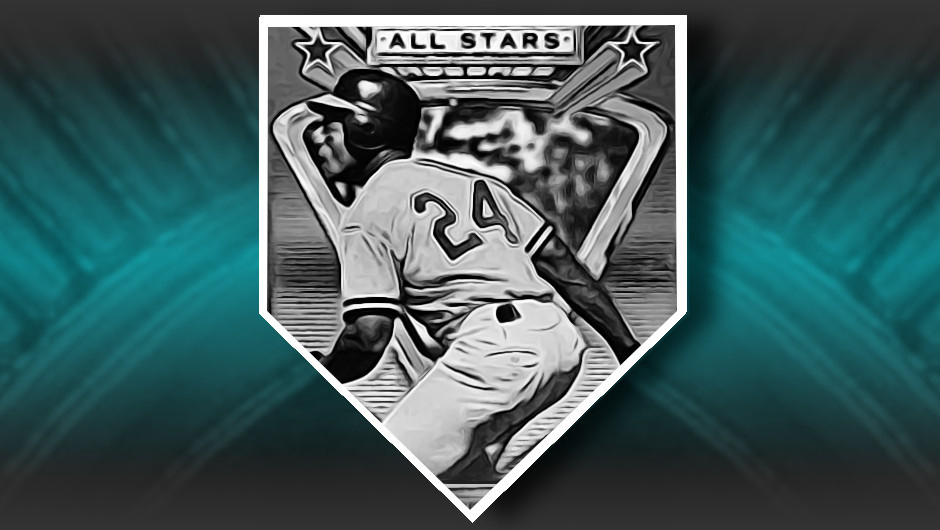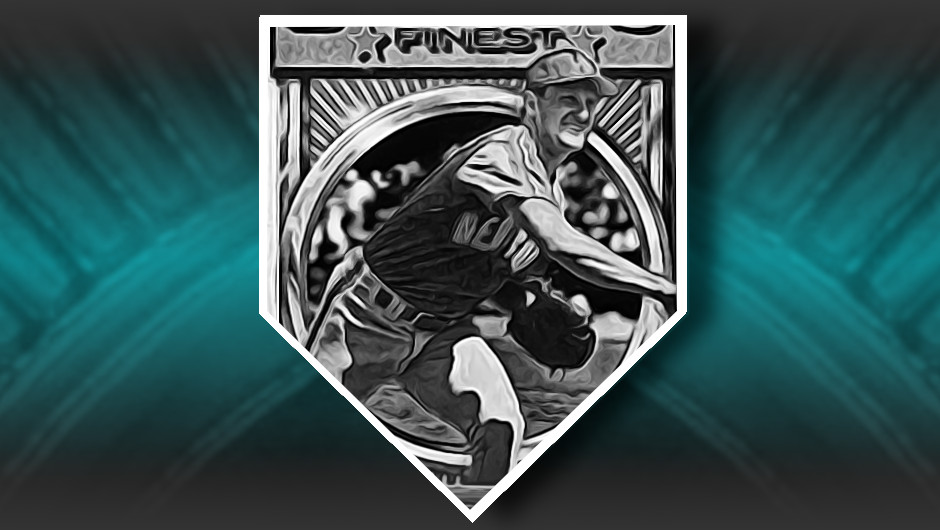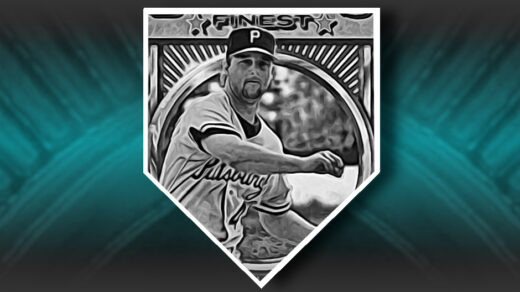How often do you see a baseball card designed around a pun? In 1988 Topps included two Bret Saberhagen in its primary baseball card set. His regular card gets the usual treatment reserved for All-Star caliber players with the assignment of a card number ending in “0” (Card #540).
The second Saberhagen card appears earlier in the checklist as part of Topps’ “Team Leaders” subset. Each team makes an appearance on multiplayer cards that often focus on clubs’ most recognizable names. The backs list the statistical pitching and batting leaders for each team in the previous season.
The Kansas City Royals are represented in this group of cards by a pair of ballplayers that one would immediately guess were the top batting and pitching performers on the squad. Saberhagen’s name appears as the leader in five categories: Innings, Wins, Complete Games, Shutouts, and Earned Run Average. George Brett appears on the front of the card with Saberhagen but surprisingly does not show up as the team leader in any statistical categories.
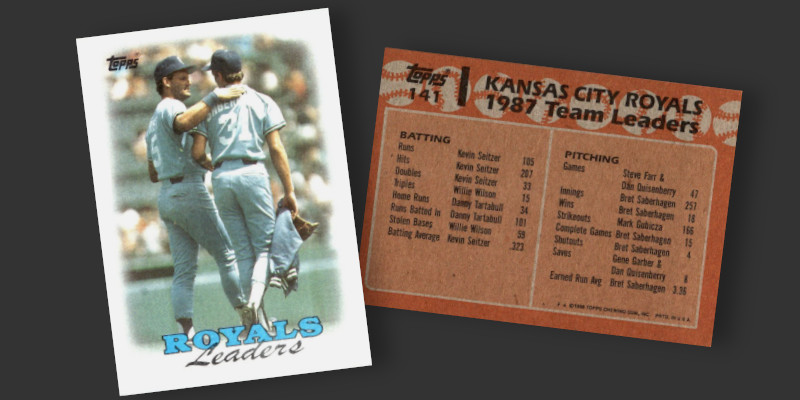
Here’s the fun part. Look at the names on the front of the card and the order in which the two men are standing. The names sewn across their backs are Brett and Saberhagen. Brett Saberhagen. Get it? Brett/Bret Saberhagen?
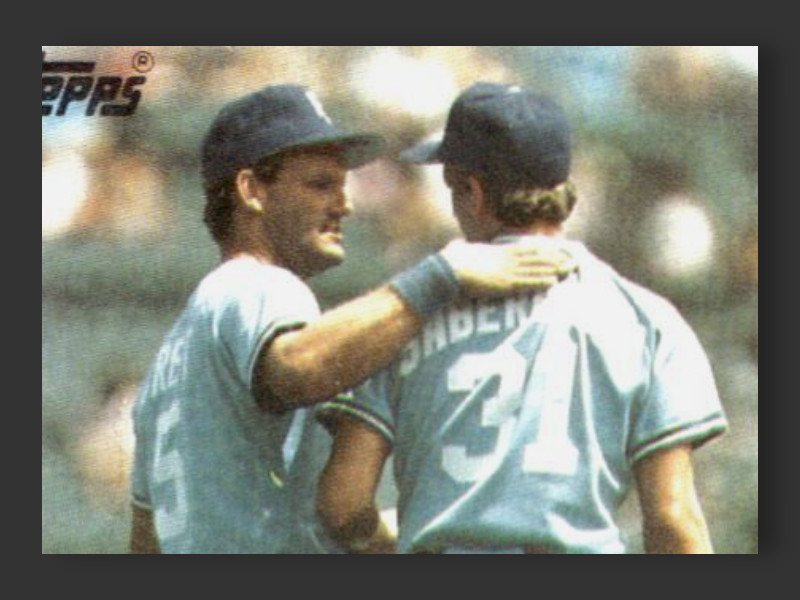
There’s a reason why Saberhagen (the one with only one “T” in Bret) took up so much ink on the back of that card. He was a phenomenal pitcher who managed to put up borderline Hall of Fame numbers despite injuries taking away several seasons.
One of the hallmarks of his pitching style was extreme precision in placing pitches. Saberhagen walked more than 50 batters only twice in his career, a number that would have been the lowest number of walks on half of MLB teams this year. In 1994 he won more games than walked batters. That same year he struck out 11 batters for every free pass. His adjusted ERA (ERA+) ranks 67th all-time, a figure made more impressive by the recognition that many of those ahead of him are relievers who benefit from short outings. Saberhagen’s 126 ERA+ is a single point away from Bob Gibson and Tom Seaver.
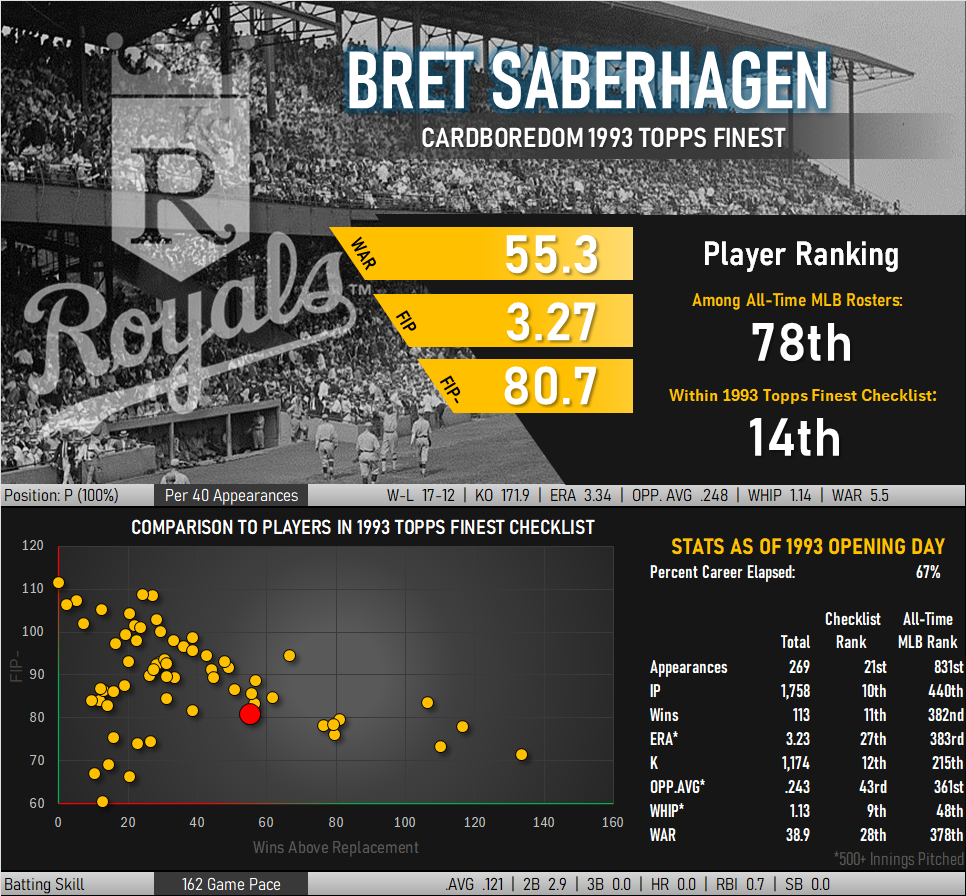
It should not be a surprise that Saberhagen got some support for Cooperstown in 2007, though his receiving only 7 votes in favor of enshrinement was unexpected. Prior to ballots being cast, he stated that he would skip the induction ceremony if he were to be elected but Pete Rose was not. The balloting relegated this electoral standoff to the realm of the theoretical. To Saberhagen’s credit, he eventually backtracked on his Pete Rose fandom after further study. In 2016 he told a Sporting News reporter that he no longer supported the Cooperstown or bust approach for Rose after finding out that the gambling activity of the Reds’ star went much deeper than initially thought. Moving on from a strongly held belief when new information appears is an admirable trait.
Story Time with a Saberhagen Refractor
I have the refractor card shown below, but I didn’t pull it from a pack. I did, however, watch former pitcher Phil Hughes find a Saberhagen refractor in a video he posted of him opening a box of ’93 Finest. Phil talks about a statistical link to Saberhagen from his own career, as well as telling the tale of what happened when he played high school ball on the same field as Saberhagen’s son Drew.
